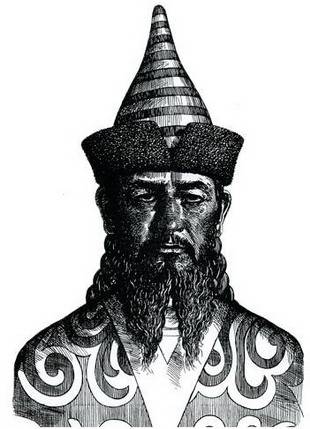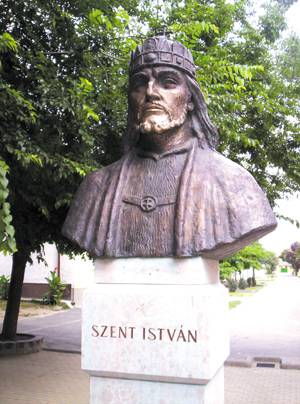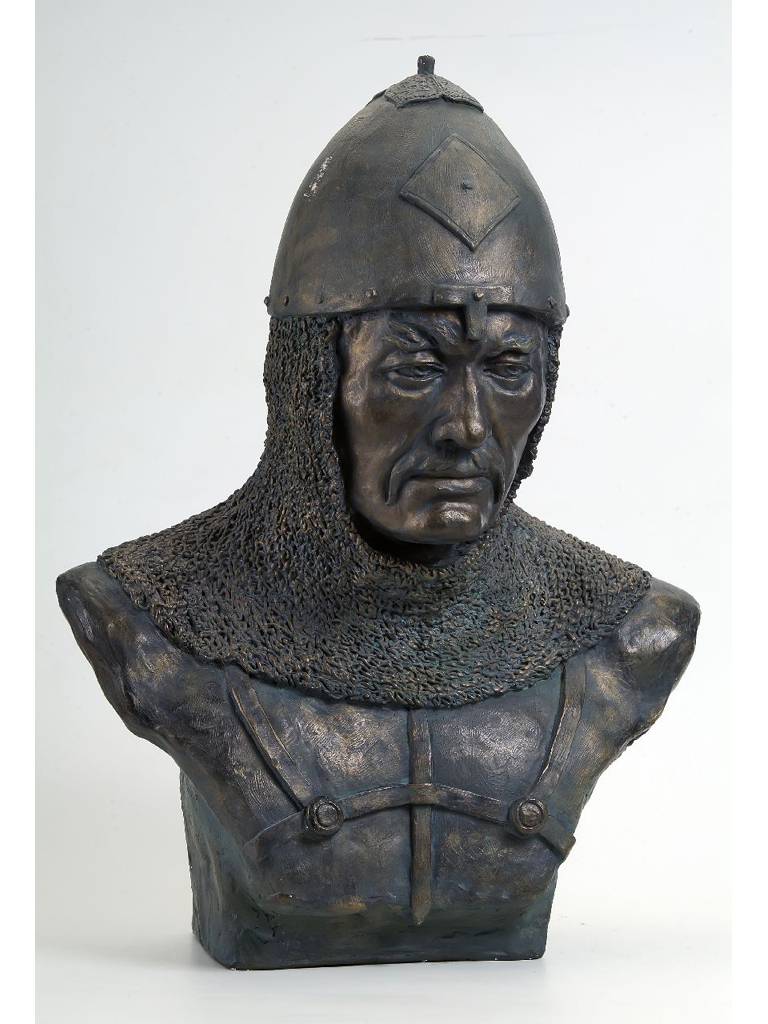Kypchak in Hungary
"The Crown of the Horde Empire, or the Tatar Yoke was not"
Gali Enikeev
... The strengthening of the Kypchak presence in Hungary dates back to 1239, when a large number of nomads moved to Alfeld. The second wave of Kypchaks came in 1246 from Bulgaria. The Kypchaks found support in the young king Istvane V and supported him in the war against Bela IV. Istvan V was married to the daughter of the Kypchak Khan Seykhan. Hungarian barons were afraid of losing the “golden liberties”. It must be said that the Hungarian nobility almost lost its influence under King Laszlo IV Kune. Only the defeat of the Kypchaks in the battle on Lake Hod in 1282 (or 1280) allowed the Hungarian barons to regain their former influence. Back in the time of Bela IV, the Hungarian magnates understood the danger to their position and took measures to eliminate competitors. Matvey of Paris reported that the Cumans refused to fight the Mongols. It only fueled suspicion. The Hungarian murder of Kotyan forced many Kipchaks to flee to Bulgaria. I. Vashari supported the hypothesis of P.Pavlov that Georgy Terter's father was a relative of Kotyan. Georgy became the Bulgarian king in 1280. Mr. O. Pritsak considered the Terterids to be a dynasty of Kypchak origin. The leader of the tribe Chekan Seykhan passed to the service of Bela IV. The daughter of Seyhan Erzhebet gave birth to Laszlo Kun, the future King of Hungary, and during his reign owned lands in Serbia and Bosnia.

The presence of the Kypchaks in Hungary and the very existence of an independent state on the western outskirts of the Eurasian steppes were an irritant for the Mongols. In 1258, the Romanovich capitulated before the Mongols and were forced to take part in the campaign 1259 – 1260 as part of the Mongolian troops. against Lithuania, Poland and Hungary. These events prompted the Serbian monk Pandeha to write a Serbian prophetic legend, how all the peoples of Central-Eastern and Southeastern Europe would be destroyed by the Mongols. The Hungarians held off the Mongol invasion of the Carpathians. In one Hungarian literacy an interesting fact was recorded. King Stephen V sent Ponita an envoy to the Tatars. The king noted that this mission turned the invasion of the Tatars away from the country. It must be said that this embassy was preceded by several years of confrontation between the Mongols and the Hungarians. In 1262, the youngest king of Hungary (co-ruler) Istvan V made peace with Berke, but did not allow his troops into his possession. In 1264, Burke proposed the Bele IV alliance. Bela IV rejected this offer. Naturally, a war followed in which the main character was Jacob Svetoslav. At that time, the Balkans were attended by the troops of Berke, led by Kutlug-Melik, who acted against the Romais in alliance with the Bulgarians. In 1265, when the war was still going on, Pope Clement IV proclaimed a crusade against Ulus Juchi. The Hungarians achieved decisive success in 1266, when Berke's troops were no longer in the Balkans. Ban Gregory took Oryahovo, Ban Ponit captured Pleven, and Master Aegidius approached Turnovo. Hungarians also captured Vidin. The threat to Hungary from the Juchids was significantly diminished after the death of Burke.
The Kypchaks as part of the Hungarian troops fought against the Czechs. During one of the Hungarian Kipchak raids on the Czech Republic, several thousand Christians were killed in Moravia. 25 June many were killed near Olomouc. The Kypchaks in 1260 took part in the Battle of Kresssenbrun, and in 1271 they attacked Austria together with the Hungarians. In 1278, the Kypchak detachments as part of the Hungarian troops fought in the battle of Moravmeszo.
The Hungarian Kypchaks were subordinated to the bishops of Eger, Kalocz, Arad, Chanad, Vác and Esztergom. In one of the letters of Bela in 1264, the lands of Paloza were transferred to the Monastery of St. Eustache. In another literacy, the Kipchak lands were transferred to a certain Count Ioanke. On the territory of the Eger Episcopia, there was an exchange of possessions between the Hungarians and the Kypchaks. The possessions of these Kypchaks were in the Borsod committee. Pope Urban IV wrote about the Kipchaks to the Archbishops of Esztergom and Kaloc. He ordered them to expel Kipchaks from the country who did not accept Christianity. Hungarian chroniclers blamed the Kipchaks for all mortal sins. But it is unclear how true these allegations are. One of the common accusations against the Kypchaks among the Hungarians and the Romans were looting by nomads. The Kypchaks were not going to move to the village. In addition, the Hungarian aristocracy and the king did not pay them for the service. They were offered to live at the expense of mining in the campaigns. But it was an irregular source of income. Therefore, in peacetime, the Kypchaks had to make raids on their neighbors in order to feed themselves at least somehow. They opposed Christianization because they did not want to pay tithes to the church. This was taken into account by the Hungarian kings and the Kypchaks did not pay tithe until the middle of the 14th century. The Kypchak aristocracy wanted to preserve their identity and customs. Under the influence of his mother (Erzhebet, daughter of Seyhan), Laszlo IV also adhered to nomadic customs. He did not live with his legitimate wife from the Anjou clan, but preferred the Kypas lovers Edua, Kupcech and Mandoulou. The king wore Kypchak clothes and jewelry. Part of the nobility took the example from the king. Some Hungarians are also addicted to the lifestyle of the Kipchaks. Sources report two Hungarian bishops who choose to live just like the king. During the reign of the Hungarian king Laszlo IV Kun, the Kypchak leaders Alpar, Uzur, Arbuz, Turtule and Kemeneche were close to the Hungarian king. Relying on the Kypchaks, Laszlo IV sought to limit the “golden liberties” of the Hungarian barons. The pretext for the intervention of the Pope were rumors that the Kipchaks remain pagans and keep Hungarians, even simple peasants, slave.
The Roman Curia sent a legate to Hungary to eradicate the remnants of paganism. At the Seten in Teteni in 1279, part of the Kypchak aristocrats (Alpar and Uzur) accepted the conditions proposed by the Pope’s envoy. They were issued in the “Certificate of Couman”. It was an ultimatum with proposals that it was impossible to refuse. In fact, Kipchaks were instructed to abandon the veneration of stone statues, adopt the clothes of the Hungarians, settle down and live in houses. The king was ordered to respect the rights of his barons, to abandon his former life. Each tribe was ordered to send inquisitors, so that they followed the purity of faith. It was ordered to free slaves from Christians. Kipchaks could be vassals of barons. For their land they were to serve in the army and in the case of evasion be punished. Kypchak aristocracy was equated with noble Hungarians. The Kypchaks were removed from the jurisdiction of the Palatin and passed on to tribal judges. For appealing the decision, the Kypchaks received the right to appeal to the king. At the same time, their lands were withdrawn from the power of the king. The “letter about the kumans” was intended to drive a wedge between the king and the Kypchak leaders, the Kypchak leaders and their people.

Naturally, part of the Kypchak aristocrats did not accept these conditions. Lazlo IV Kuhn did not accept them either. The king wanted to send the papal legate out of the country and forbid him to return on pain of death. The legate cursed the king and excommunicated two bishops. Taking advantage of the favorable moment, the barons removed the Kypchaks from the court, and took the king himself into custody. In Hungary, a civil war began. Hiding behind the name of the king, the Hungarian magnates raised their vassals to the Kipchak war. The decisive battle took place on Lake Hod in 1282 (or 1280). She influenced the state of the Kipchaks and reduced their political influence. Echoes
confrontations with the barons and the Pope were felt later. In 1284, the Kipchaks attacked the possessions of Thomas Chanad and then continued to capture the Christians. They maintained their habits and beliefs, despite the fact that the king had earlier promised the Pope to adhere to the norms of the “Letters of the Cumans” and force the Kypchaks to accept Christianity. At the court remained to serve Watermelon, Turtule and Kemeneche. The Roman Curia threatened with sanctions and the Hungarian nobility plotted to kill the king. The artists of the plan were Watermelon and Turtule, who were later executed to hide the traces of the crime. Kipchaks continued to remain in retinue
The Arpadas (under King Endre (Andrash III) were courtiers of the Kypchaks, but their influence was very much reduced compared with the time of Laslo IV Kuhn). In the XIV century. The Kipchaks actually became Christianized and economically turned to settled life and gradually merged with the Hungarians. The Kypchaks served in the Hungarian army and during the Anjou dynasty. The final approval of Catholicism among Hungarian Kypchaks occurred in 1410, however, the Kypchaks finally dissolved in the Hungarian environment only after a few centuries. Part of the Kypchaks after the battle on Lake Hod fled to the territory of Ulus Juchi and Bulgaria. Among them chroniclers mentioned a certain Aldamura. He can be identified with Aldimir by Bulgarian historians. Oldamur was a relative of George Terter. The diplomacy of King Laszlo Kun witnessed an expedition of Hungarians east of the Carpathians. Obviously, the Hungarians carried out this campaign in pursuit of the Kypchaks. The rulers of the Galicia-Volyn state perceived it with hostility and responded with a raid on the Hungarian possessions. The presence of Rusyns troops in the Tisza basin is testified by Hungarian letters. Romanovich covered the fleeing Kypchaks. Tigak, whom V. Otroshchenko identified with Chingulsky Khan, served Volyn princes. The Taganchi emir was also in their service. The late appearance of Aldimir in Bulgaria can be explained by the defeat at Lake Hod. According to the influx of Oladmour, Telebug made a campaign against Hungary in 1285. Thus, the campaigns of Rusyns and Tatars against the Hungarians were caused by an alliance with the rebellious Hungarian Kipchaks.
Bulgarian Kipchak feuded with Hungary. In 1272 – 1273 Gyorgy Sovari fought against the Kypchak Dorman and his Bulgarian allies. Dorman is Drman Bulgarian documents. Drman and Kudelin ruled in Branichevo. They fought against the Serbian king Milutin. The Serbs conquered Branichevo and Belgrade. Kipchak Shishman, who ruled Vidin, helped Drman and Kudelin. But the Serbs won and his army. They approached Vidin. This caused interference from Nogai, who favored the Bulgarian aristocracy of Kypchak origin.

So, in the Kypchak ethnonymy of Hungary there are ethnic names of the tribes of both the western part and the eastern part of Desht-i-Kypchak. Western Kypchaks were, of course, more numerous, but among the migrants there were, for example, representatives of the Eastern Kipchak kangls. The Kypchaks who moved to Hungary in 1239 and 1246 were settled in the royal domain. In rare cases, they were settled in the territories controlled by the barons. In the Kypchaks, the Hungarian kings saw opportunities to change the balance of forces in their favor. During the reign of Laszlo IV Kuhn, the life of the Hungarian aristocracy began to acquire nomadic features, but this process was stopped by the intervention of the Roman Curia. Part of the Kypchak aristocracy at the congress in Teteni adopted the basic rules enshrined in the “Letter of the Kumans”. Those who did not accept these conditions, or were destroyed in the Battle of Lake Hod, or were turned into slaves, or fled to Bulgaria and Ulus Juchi. Nogay was not an ally and not an enemy of the Kipchaks, but spoke only against Oldamur and George Terter, whose plans hindered the implementation of his plans. Palocians are descendants not only of the Kipchaks, but of all Turkic settlers in the north and north-west of the Kingdom of Hungary. Among the ancestors of Paloza were the Pechenegs, Oguzes, Bayandu, and Kipchaks. It was the Hungarian adaptation of the West Slavic name Kipchak that became the name of this ethnic group within the Hungarian nation.
Information